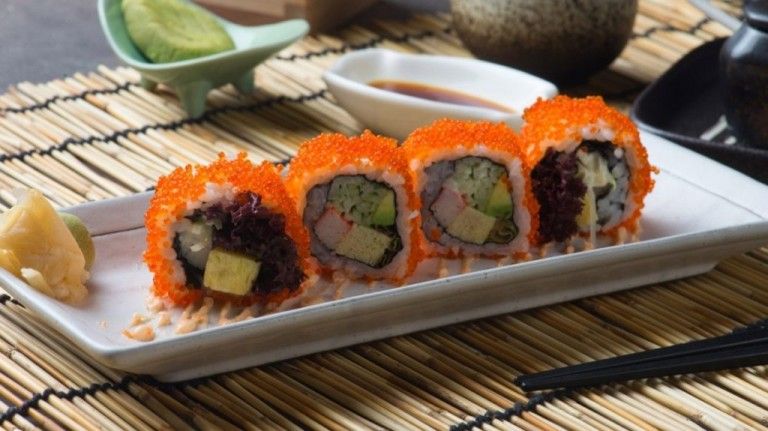Masago is the most common ingredient that gained popularity recently among sushi rolls. If you like to eat sushi rolls then there is a high chance that you would also like Masago as well.
Masago is the orange-red fish eggs that Sushi’s chefs have been using to add flavor, texture, and color in the food. The fish egg roe comes from small fishes like salmon, sturgeon, and herring.
These small fishes are also known as the Capelin fish. Masago has a transparent appearance and they look like jelly. These fish eggs are distinctive and mild in the flavor that makes the Masago more nutritious.
What Is Masago?
Masago is also known as the Smelt roe, it is the fish egg that is edible. Capelin fish belong to the smelt family they are also considered as forage fish.
Capelin fish are primarily found in the northern hemisphere in the Arctic, Pacific, and Atlantic ocean. These capelin fish are an important food source for larger sea animals such as whales, seabirds, and codfish.
These small silvery-green capelin fish looks like the sardines. The flesh of the capelin fish is edible and considered in many aquatic systems across the world. Fishermen are using capelin fish to make many products, such as Masago.
80% of harvest capelin fish has been used to produce fish oil and fishmeal. And the remaining 20 % of capelin fish has been using to produce smelt roe. Female capelin fish start releasing eggs around the 2 to 4 years of age and they release smelt roe until death.
Masago is harvesting from the female capelin by cutting them when the fish is full of the eggs and also before the release of eggs. Smelt roe is one of the common ingredients of sushi rolls.
Fish roe is generally a portion of healthy food, According to the United States OF Department Of Agriculture, fish roe is low in calories and high in proteins.
Smelt roe contains many health benefits such as vitamins, magnesium, and fatty acids. These nutrients can help you to reduce the inflammation and protect your brain from oxidative damage.
According to one study, masago roe is high in fats that can improve the learning ability and also lower the fat in the blood.
Masago vs. tobiko
Masago is often confused with tobiko — the eggs or roe of flying fish. Although similar, tobiko and masago have key differences.
Masago is smaller and less expensive than tobiko, which is why it’s used as a popular substitute for tobiko in sushi rolls.
Unlike the naturally bright-red hue of tobiko, masago has a dull yellow color and is often dyed to enhance visual interest.
While masago tastes similar to tobiko, it has a less crunchy texture. Overall, tobiko and masago are very similar, yet tobiko is considered a more high-end sushi ingredient due to its cost and quality.
Low in calories but high in nutrients
Like other types of fish roe, masago is low in calories but high in many important nutrients.
Just 1 ounce (28 grams) of fish roe contains (2):
- Calories: 40
- Fat: 2 grams
- Protein: 6 grams
- Carbs: less than 1 gram
- Vitamin C: 7% of the Reference Daily Intake (RDI)
- Vitamin E: 10% of the RDI
- Riboflavin (B2): 12% of the RDI
- Vitamin B12: 47% of the RDI
- Folate (B9): 6% of the RDI
- Phosphorus: 11% of the RDI
- Selenium: 16% of the RDI
Fish roe is particularly high in vitamin B12, an essential nutrient that you must get from the foods you eat, as your body cannot produce it on its own.
B12 is critical for many functions, including red blood cell development, energy production, nerve transmission, and DNA synthesis
Fish roe like masago is low in carbs but rich in protein and healthy fats like omega-3 fatty acids.
These polyunsaturated fats help regulate inflammation and are vital for the proper function of your immune system, heart, hormones, and lungs
additionally, fish roe is packed with amino acids — the building blocks of protein — especially glutamine, leucine, and lysine
Glutamine plays important roles in intestinal health and immune function, while leucine and lysine are essential for protein synthesis and muscle repair





